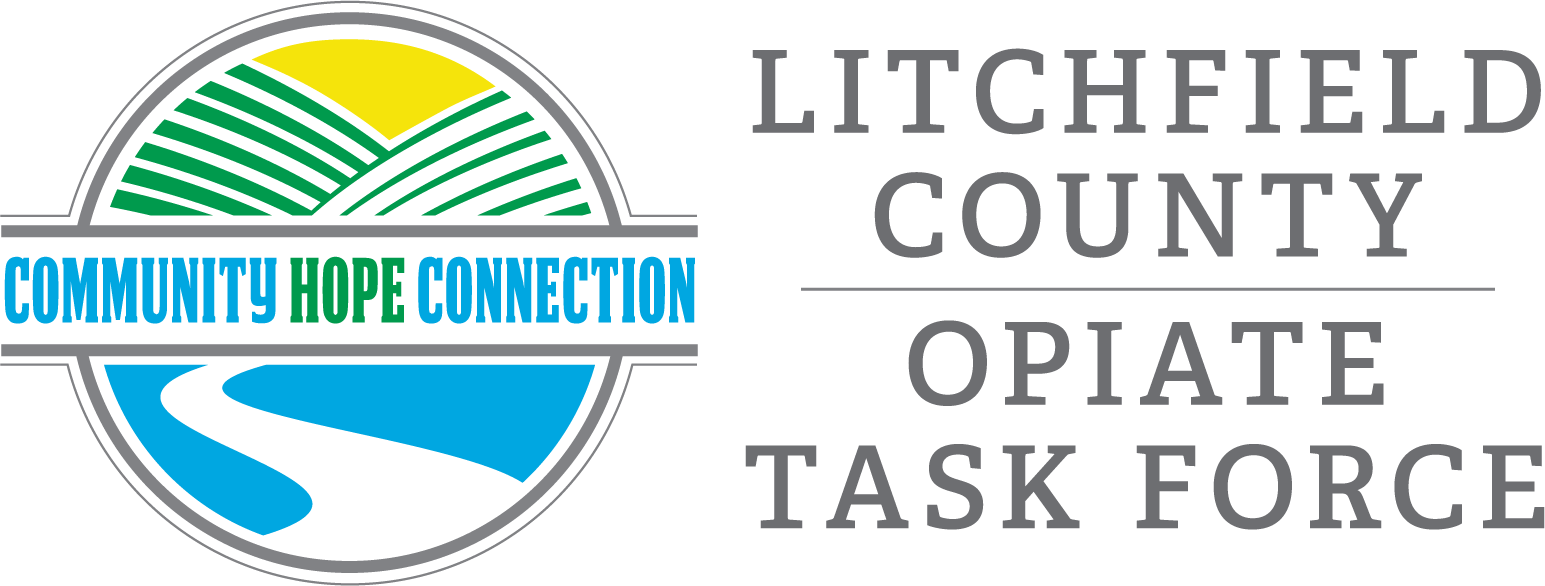Opioid-Involved Overdose Deaths
In 2017, there were 955 overdose deaths involving opioids in Connecticut—a rate of 27.7 deaths per 100,000 persons, which is twofold higher than the national rate of 14.6 deaths per 100,000 persons (Figure 1). The greatest increase in opioid deaths was see in cases involving synthetic opioids (mainly fentanyl): a rise from 79 deaths in 2016 to 686 in 2017. Deaths involving heroin also increased from 98 deaths in 2012 to 450 in 2016 but saw a decrease in 2017 to 425 deaths. Prescription opioids were involved in 273 deaths in 2017, a more than fourfold increase from 60 in 2012.
Figure 1. Number of overdose deaths involving opioids in Connecticut, by opioid category. Drug categories presented are not mutually exclusive, and deaths might have involved more than one substance. Source: CDC WONDER.
Opioid Pain Reliever Prescriptions
In 2017, Connecticut providers wrote 48.0 opioid prescriptions for every 100 persons (Figure 2) compared to the average U.S. rate of 58.7 opioid prescriptions. Since 2012, this represents a 30 percent decline (CDC). The rate of overdose deaths involving opioid prescriptions has not followed this trend and steadily rose from 1.6 deaths in 2012 to 7.7 deaths per 100,000 persons in 2017 (Figure 2).
Figure 2. Connecticut rate of overdose deaths involving prescription opioids and the opioid prescribing rate. Source: CDC and CDC WONDER.
Neonatal Abstinence Syndrome (NAS)
NAS or neonatal opioid withdrawal syndrome (NOWS) may occur when a pregnant woman uses drugs such as opioids during pregnancy. A recent national study showed a fivefold increase in the incidence of NAS/NOWS between 2004 and 2014, from 1.5 per 1,000 hospital births to 8.0 per hospital births. That is one baby born with NAS/NOWS every 15 minutes in the United States. During the same period, hospital costs for NAS/NOWS births increased from $91 million to $563 million, after adjusting for inflation (Figure 3).
The state of Connecticut reports on the number of hospital discharges for babies born with NAS due to fetal exposure to opioids. From 2004 to 2014 the number of NAS/NOWS hospital discharges doubled from 163 to 384 cases. This number has since then continued to rise to 440 in 2017 (Chime Hospital Discharge Data, Connecticut Department of Public Health).
Figure 3. NAS/NOWS Incidence Rate and Hospital Costs for Treatment in the United States. Source: T.N.A. Winkelman, et al., 2018.
HIV Prevalence and HIV Diagnoses Attributed to Injection Drug Use (IDU)
Figure 4. Connecticut: Estimated percent of male vs. female with new HIV diagnoses, by transmission category, 2016. Source: CDC and www.AIDSVU.org.
- U.S. Incidence: In 2016, 9 percent (3,480) of the 39,589 new diagnoses of HIV in the United States were attributed to IDU. Among males, 6.3 percent (2,530) of new cases were transmitted via IDU or male-to-male contact and IDU. Among females, 2.3 percent (950) were transmitted via IDU (CDC).
- U.S. Prevalence: In 2016, 991,447 Americans were living with a diagnosed HIV infection—a rate of 306.6 cases per 100,000 persons. Among males, 19.9 percent (150,466) contracted HIV from IDU or male-to-male contact and IDU while 21 percent (50,154) of females were living with HIV attributed to IDU (CDC).
- State Incidence: Of the new HIV cases in 2016, 251 occurred in Connecticut. Among males, 10.6 percent of new HIV cases were attributed to IDU or male-to-male contact and IDU. Among females, 20.8 percent of new HIV cases were attributed to IDU (Figure 4) (AIDSVu).
- State Prevalence: In 2015, an estimated 10,360 persons were living with a diagnosed HIV infection in Connecticut—a rate of 338 cases per 100,000 persons. Of those, 35.7 percent of males cases were attributed to IDU or male-to-male contact and IDU. Among females, 34.9 percent were living with HIV attributed to IDU (AIDSVu).
Hepatitis C (HCV) Prevalence and HCV Diagnoses Attributed to Injection Drug Use1
- U.S. Incidence: In 2016, there were an estimated 41,200 new cases of acute HCV2 (CDC). Among case reports that contain information about IDU, 68.6 percent indicated use of injection drugs (CDC).
- U.S. Prevalence: An estimated 2.4 million Americans are living with HCV based on 2013-2016 annual averages (CDC).
- State Incidence: There were approximately 17 new cases of acute HCV (0.5 per 100,000 persons) reported in Connecticut in 2016 (CDC).
- State Prevalence: In Connecticut, there are an estimated 18,600 persons living with Hepatitis C (2013-2016 annual average), a rate of 660 cases per 100,000 persons (HepVu).
Additional Resources
- Connecticut State Department of Public Health, Opioids and Prescription Drug Overdose Prevention Program
- Centers for Disease Control and Prevention, Opioid Overdose
FY2018 NIH-funded projects related to opioid use and use disorder in Connecticut: 15 View ResultsFind treatment in Connecticut (SAMHSA)
Notes
- Not all states collect or report data on the incidence or prevalence of Hepatitis C or on how Hepatitis C is transmitted. When available, the data will be included.
- Actual acute cases estimated to be 13.9 times the number of reported cases in any year.
Original Page – https://www.drugabuse.gov/drugs-abuse/opioids/opioid-summaries-by-state/connecticut-opioid-summary




